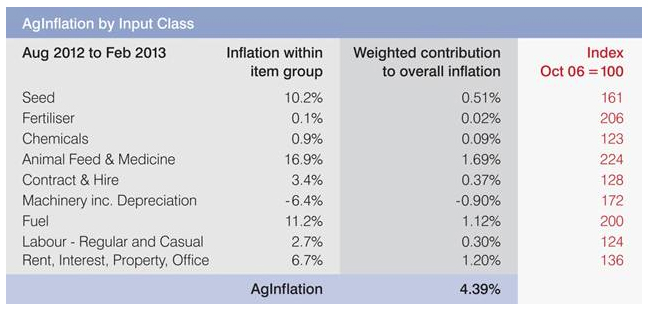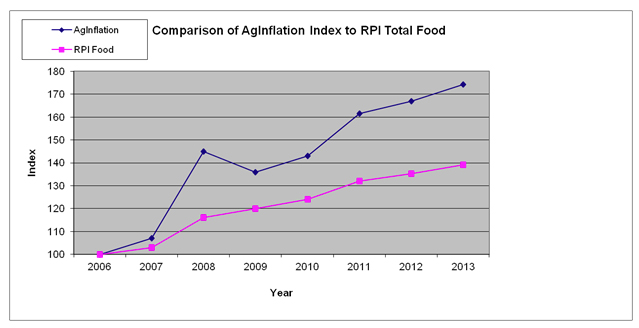
Results for the last six months of the Anglia Farmers Agricultural Inflation Index have shown an increase in farm input costs with an AgInflation figure of 4.39%.
The figures, which represent inflation experienced since August 2012, will be presented at the Norfolk Farming Conference today, Thursday 21 February.
The figures show an increase from AgInflation of 3.38% recorded for the year from August 2011 to August 2012.
The overall inflation of 4.39% reflects a period of some instability, with significant increases in inflation seen for feed and animal health products (16.9%), fuel (11.2%) and seed (10.2%). The only area to have experienced deflation is machinery (-6.4%).

Individual enterprises show that the costs have gone up for all farm types. Livestock areas have experienced the largest increases with dairy costs rising by 10.07% and beef and lamb by 9.83%.
The cost of producing combinable crops has gone up by 2.76%, lying marginally behind sugar beet (3.73%) with potatoes rising significantly to 10.89%.
A comparison with the Retail Price Index (RPI) is also significant for farmers as the gap between AgInflation and the RPI continues to widen. Comparing figures since 2006 at the base rate of 100, the RPI is now 139 and AgInflation today is 174.
The prices paid by consumers mirror some of the rises in AgInflation. The RPI on potatoes has increased by 25.7% over the past six months and the RPI on bread and margarine has increased by 4.6%. Beef and lamb prices have risen in the shops by 3.4% but the cost of production to farmers has increased by 9.83%.
However some products show no increase at retail level.
While the cost of production for dairy farmers has risen by 10.07%, wholesale milk prices have not changed.
Clarke Willis, AF Group CEO, said: "While the costs of cereal and oilseed rape production have risen, inflation has been lower than for other enterprises as fertiliser and chemical costs have both seen increases of less than 1%. The dramatic increase in the cost of potato production has been driven by the limited supply of potato seed following last year’s very poor harvest."
"The rising cost of fuel has affected all sectors and rising animal feed prices have caused significant increases in production costs for livestock and dairy farmers.
"Machinery is the only input to have experienced deflation in the last six months. Workshop labour costs have decreased and the price of genuine and non-genuine wearing parts has also fallen or remained static.”
Costs in the index are noted when they are experienced rather than when the inputs are used and the prices reflect prudent purchasing practice so may include, for example, fertiliser purchased but not applied until the following year.
Launched in 2006 by Anglia Farmers (AF) and compiled by Norfolk farmer and former AF director Jim Alston, the index has become a definitive tool for assessing the cost of farming production and guiding negotiations within the wider food industry.
Using information from the group’s buying office, which has a sourcing power of more than £250 million, it is intended to reflect the changing expenditure of farming and is a weighted average of nine cost centres and 132 cost items. Weightings within cost centres and between them are based on average farm and grower expenditure.
